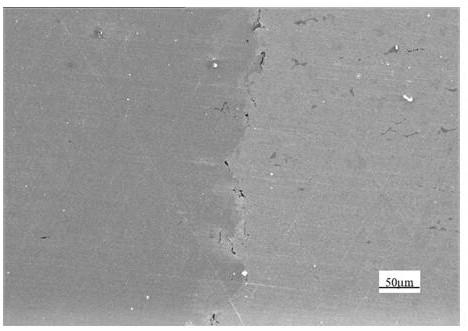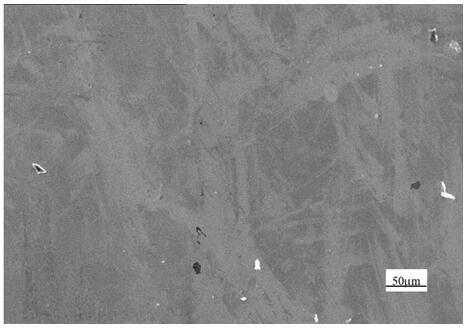Method for connecting copper-based alloy and die steel alloy by 3D printing method
A copper-based alloy, 3D printing technology, applied in the field of 3D printing, can solve the problem of high cost of random cooling molds, and achieve high social and economic benefits, improve production efficiency and service life.
- Summary
- Abstract
- Description
- Claims
- Application Information
AI Technical Summary
Problems solved by technology
Method used
Image
Examples
specific Embodiment approach 1
[0018] Specific implementation mode 1: This implementation mode records a method for realizing the connection between copper-based alloy and mold steel alloy by using 3D printing method, and the steps of the method are as follows:
[0019] Step 1: Make a copper-based alloy base according to actual needs. It is necessary to ensure that the surfaces on the base that will be connected to the mold steel are on the same plane, and use thermal spraying technology on the surface that will be connected to the mold steel on the base. A layer of nickel is plated; the copper-based alloy base can be processed by traditional machining or casting technology;
[0020] Step 2: Use EOS M280 3D printer to sinter the nickel-plated surface, and polish the sintered nickel-plated surface into a plane;
[0021] Step 3: Use 3D printing technology to print out prints with different shape requirements on the base according to actual needs;
[0022] Step 4: Heat treatment on the manufactured parts.
specific Embodiment approach 2
[0023] Embodiment 2: In Embodiment 1, a 3D printing method is used to realize the connection between copper-based alloy and die steel alloy. In step 1, the thickness of the nickel plating layer is 20-40 μm.
specific Embodiment approach 3
[0024] Specific embodiment three: a method of using a 3D printing method to realize the connection between the copper-based alloy and the mold steel alloy described in the specific embodiment one. In step two, the sintering treatment is specifically: using SLM technology to perform laser sintering treatment, The laser power is 300W, the scanning rate is 960mm / s, the scanning distance is 0.11mm, and the number of laser scanning is 2 times.
[0025] Specific embodiment four: a method of using 3D printing method to realize the connection between copper-based alloy and die steel alloy described in specific embodiment one, in step three, the powder used for printing is MS1 die steel powder, and the printing parameters are: The powder thickness is 40μm, the scanning speed is 960mm / s, the printing power of the first and second layers is 265~325W, and each layer is scanned twice by laser, starting from the third layer, the printing power is 285W, and the laser scans once until the prin...
PUM
 Login to view more
Login to view more Abstract
Description
Claims
Application Information
 Login to view more
Login to view more - R&D Engineer
- R&D Manager
- IP Professional
- Industry Leading Data Capabilities
- Powerful AI technology
- Patent DNA Extraction
Browse by: Latest US Patents, China's latest patents, Technical Efficacy Thesaurus, Application Domain, Technology Topic.
© 2024 PatSnap. All rights reserved.Legal|Privacy policy|Modern Slavery Act Transparency Statement|Sitemap



